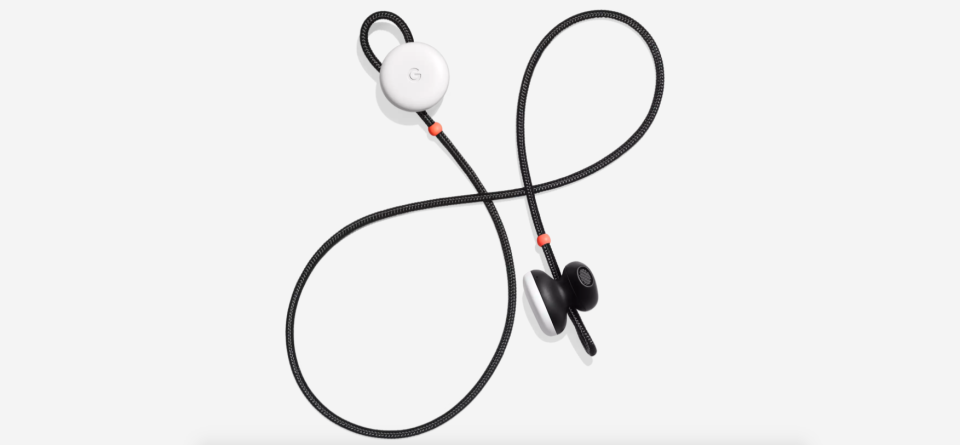Not OK, Google: The headphone jack exists for a reason

It was stupid when Apple (AAPL) got rid of the headphone jack on its smartphones, and Google (GOOG, GOOGL) doing the same thing with its new Pixel 2 phones doesn’t make that move any smarter—just less likely to succeed.
It would be tempting to treat this removal of a standard audio component as an excuse to laugh at the eggheads on Google’s Mountain View, California, campus. But by making its $649 Pixel 2 and $849 Pixel 2 XL that much less attractive compared to other Android models, Google also sandbags its ability to advance its own operating system.
The headphone jack still just works
What I wrote when Apple excised the headphone jack last September still stands: The 3.5mm analog headphone jack, a fixture in consumer electronics since the 1960s, doesn’t suffer from inherent audio-quality limitations—the digital-to-analog converter in the phone and the speakers in any attached headphones makes the difference there.
Keeping the same connector from the days of the transistor radio has, however, immensely simplified music listening. Buy any pair of headphones, no matter how weird they might be past the plug, connect it to a device, rock out; there is no step four.
As Google put it when launching the Pixel last October—the phone I bought this summer, and which is in my pocket as I type this—the headphone jack is “refreshingly not new.”
Google touts that the new Pixel 2 instead offers dual front-facing speakers. I suppose it is possible that they can deliver better audio quality than stock headphones—but you’re far more likely to listen to music on your phone in public settings that demand headphones.
Unless you have a deep-seated yearning to get tossed out of Amtrak’s Quiet Car, trading a headphone jack for speakers is a pointless trade-off.
USB-C > Lightning, but not by much
Google’s jettisoning the jack is better than Apple’s in only one aspect: It doesn’t own the USB-C standard in the way that Apple owns Lightning, so it can’t tax third-party headphones and adapters.
So if you lose the USB-C headphones or the USB-C adapter—$20 sold separately, well above the $9 price of Apple’s Lightning adapter—that comes in the box with each Pixel phone, the prices of third-party replacements won’t be inflated by the “Made for iPhone” royalty Apple charges for Lightning accessories.
USB-C’s wider support and lower price, however, don’t erase other usability defects.
With only one port on a mobile device, you can’t charge it and listen on headphones unless you buy an adapter dongle with USB-C and headphone-jack inputs (Google sells one for $44.95). And you can’t use the included USB-C headphones with a vast universe of devices old and now—like, say, the iPad Pro I’m typing this on.
Just as Apple touted its $159 Bluetooth wireless AirPods as the solution to that, Google now has its $159 Bluetooth wireless Pixel Buds. Their ability to perform real-time translation of languages—like the Babel Fish of Douglas Adams’ “The Hitchhikers’ Guide to the Galaxy”—makes them more than a me-too product.
But their five-hour battery life does not set them apart from Apple’s AirPods. Here, too, you’ll have to pop the headphones into a charging case to top them off. Boring old analog headphones don’t suffer from that defect.
Other phone vendors aren’t going there
The competing phone manufacturers that sell the vast majority of Android devices have largely resisted the temptation to imitate Apple in this aspect.
Samsung’s Galaxy S8 and Galaxy Note 8 each ship with a standard headphone jack. So do LG’s G6 and V30. Yes, Moto’s Z2 Force did away with that output—but its newer X4 includes it.
Those competing phones, however, lack a signature feature that the Pixel 2 lineup shares with the first round of Pixel phones and the series of “pure Google” Nexus devices that preceded them: a copy of Google’s Android software that ships free of third-party tweaks and gets updates on time.
The absence of both virtues in most Android phones remains a crushing disappointment in this sector of the phone market.
Google’s own statistics about Android versions in active use show how bad it is: For the seven days ending Oct. 2, only .2% of Android devices ran the Oreo version that shipped in August, while 17.8% ran last year’s Nougat release. A plurality, 32%, were stuck on the 2015-vintage Marshmallow.
Google’s Nexus and Pixel phones have allowed a minority of Android users to escape that problem. And even in their worst sales periods, they’ve at least led by example, showing other vendors what Android can do in stock condition.
The two new Pixels, however, may instead serve as an exhibit of why it’s good to exercise a little courage in product design instead of following Apple’s every example.
More from Rob:
Email Rob at [email protected]; follow him on Twitter at @robpegoraro.
